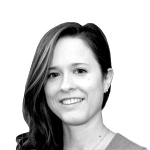We often think that there can be 2, perhaps 3 different generations existing on one Board yet that amount could actually be ‘4’……… The article below written for the American Society Of Association Executives by HR consultant Sheila Birnbach, president and CEO of Birnbach Success Solutions, Inc provides some great advice on bridging these ever changing generational gaps.
MORE ADVICE ON BRIDGING THE GENERATIONAL DIVIDE

Adding to the conversation on generational diversity, an HR consultant shares tips on how to handle challenges around managing four generations in the workplace.
A growing diversity concern in the American workplace is the increasing generational divide. With at least four generations at work now, organizations are struggling to find ways to manage age-related challenges, said AARP COO Jo Ann Jenkins during her opening address at ASAE’s 2014 Finance, HR, & Business Operations Conference last week.
As Jenkins pointed out, though, age is really not the problem. The challenge is more about managing the differences in experience and motivation.
HR consultant Sheila Birnbach, president and CEO of Birnbach Success Solutions, Inc., echoed this idea in a follow-up FHRBOC session, in which she answered questions and doled out tips on workplace trends, including diversity.
“We have competent people of all ages, races, and genders, so how do we neutralize the age difference?” asked Birnbach. “The only way we do that is through communicating. Anywhere there are differences, just open up the conversation.”
While it may seem somewhat expected, there is truth to that advice. Greater communication leads to more understanding and ultimately greater acceptance.
It applies not only to employees but to volunteers as well. As associations are trying to attract more young volunteers to serve on committees and boards, they grapple with the side effects of generational differences in opinion and work styles.
We have competent people of all ages, races, and genders, so how do we neutralize the age difference?
Here’s more advice from Birnbach, in response to conference attendees’ questions, on how to manage those differences:
How can we foster better relationships between younger managers and older workers?
This was a central theme in Jenkins’ opening address in which she explained that many younger managers don’t know how to manage older workers, and older workers don’t know how to get what they want out of their younger managers. Some organizations may even fear intergenerational conflict to such an extent that they avoid hiring older workers, she added.
What helps to bridge the generation gap is mutual understanding, Birnbach said. “Age is not the issue. It’s life experience, and I think that we don’t take the time to share what our life experiences have been to help understand one another.”
One way to further develop understanding between generations is through mentorship, which does not necessarily need to take the form of a top-down approach. “We tend to think of mentoring as the senior person mentoring the newbie, or the tenured person mentoring the inexperienced person,” Birnbach said. “But mentoring can go in both directions.”
How do we manage the expectations of younger employees who want to have our jobs next week as opposed to going up the ladder?
“It starts on day one,” Birnbach said. “We need to ask our employees, whether they are younger or older, ‘What can we do to help advance your career? What do you need from me as a manager to help you feel satisfied in your job here?’”
Birnbach added that part of managing the expectation is understanding where it comes from. The pace of work has picked up enormously with new technology. We’re able to communicate faster and wider. We can research things faster. And for millennials, who grew up in the midst of these changes, they are more accustomed to the faster pace, which may feed into a desire to climb the ladder faster.
So, how do you manage those expectations? “Communication is the key,” Birnbach said. “Rather than feeling this is a source of conflict, determine how you can embrace that a young person wants to develop their skill sets. What can you do to give them more education or training? How can you help them develop and grow their potential? Whether it’s with your organization or with someone else, they’re more likely to stay with you if we as the employers are helping them grow and develop, gain skills, gain talents.”
How do you take the ideas of younger workers and turn them into knowledge? Turn them into strategy?
“You can cite facts to me all day long, but that’s not going to turn something into a value proposition,” said one session participant of younger workers who are often quick to come up with ideas but are sometimes short on strategy.
While this issue is more cultural than age-related, one key to handling it is not to stifle the new ideas and enthusiasm of younger workers, but rather to work with them to mold their contributions into a strategy that will work for your organization. Don’t just tell someone that something hasn’t worked in the past. Tell them why it didn’t work, and then work with them to finesse the idea.
“The combination of institutional knowledge, which your tenured people have, and the enthusiasm and energy and new ideas of younger workers, if we can find a way to bring them together in teams, projects, taskforces, then we make the best use of everyone’s strengths and talents,” Birnbach said. “Capitalize and nurture the talents and skills of everyone.”
How has your association worked to bridge the generational divide, either with employees or volunteers? Let us know in the comments.


